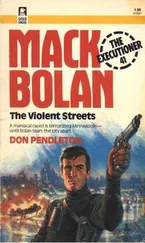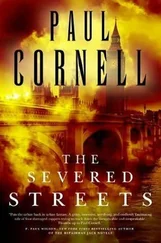Good and simple questions, to which a detective can have no immediate response. The name of Kevin Robert Lawrence appears nowhere in the Latonya Wallace case file, nor does it stir the memory of any detective or detail officer involved in the case. And but for the fact that Mr. Lawrence was arrested yesterday for attempting to shoplift some veal cutlets from a Bolton Hill grocery store, his name would not correlate with any criminal history within easy reach of the Baltimore Police Identification computer.
This, the detectives must concede, is not a promising fact. Generally speaking, the ideal rape-murder suspect usually manages to post on his BPI sheet something more substantive than a single shoplifting charge. Yet this Lawrence kid managed to get his hands on a dead little girl’s library book without ever acquiring a police record. In fact, if it wasn’t for his little shopping spree, the name of Kevin Robert Lawrence would probably never be uttered by any homicide detective. But Mr. Lawrence wanted veal for dinner and he apparently wanted it on the cheap, and by that limited ambition alone, he is now the leading suspect in the murder of Latonya Wallace.
Caught by a store security guard and held for a Central District wagon, the twenty-one-year-old Lawrence was taken to the lockup late yesterday, where a turnkey applied the appropriate amount of ink and produced a fingerprint card with a freshly minted BPI number. Overnight, the card traveled the usual route to the fourth-floor records section at headquarters, where it got the requisite run through the Printrak, which can compare a latent print with the hundreds of thousands of print cards on file with the Baltimore department.
In a perfect world, this wondrous process would produce evidence on a regular and routine basis. But in Baltimore, a city that can in no way be called perfect, the Printrak-like any other technological marvel in the department’s crime laboratory-functions in accordance with Rule Eight in the homicide lexicon:
In any case where there is no apparent suspect, the crime lab will produce no valuable evidence. In those cases where a suspect has already confessed and been identified by at least two eyewitnesses, the lab will give you print hits, fiber evidence, blood typings and a ballistic match. And yet in the case of Latonya Wallace, a murder that genuinely matters, this rule seems not to apply. For once, the lab work has suddenly propelled a stalled investigation forward.
Not surprisingly, the sudden print hit found the Latonya Wallace case flat on its back because Tom Pellegrini was in precisely the same condition. His coughing had continued without respite, and the exhaustion seemed to leave him with less and less each day. One morning, trying to get out of bed, he felt as if his legs were barely moving. It was like one of those dreams in which you’re trying to run from something but you just can’t get started. Again, he went to a physician, who diagnosed the respiratory problem as an allergic reaction. But allergic to what? Pellegrini had never had an allergy before in his life. The doctor suggested that stress can sometimes trigger an allergy that might ordinarily be contained by the body’s defenses. Then: Have you been under any particular kind of stress lately?
“Who? Me?”
Every day for three months, Pellegrini had come dragass into the office to stare at the same photographs and read the same office reports. And every day the thing looked exactly the same. Every other day he was out wandering the streets of Reservoir Hill, checking the basement of a vacant rowhouse or the back of an abandoned car or truck, searching for his lost crime scene. He worked back on every significant suspect, interviewing friends, relatives and acquaintances of the Fish Man; and Ronald Carter, who tried to implicate the Fish Man; and Andrew, who parked his car in the back alley and admitted to having been out there on the night the body was dumped. He worked the fresh leads, too, checking out this sex offender locked up for a child rape in Baltimore County, or that pedophile caught playing with himself outside an elementary school. He went to the polygraph examinations at the State Police barracks in Pikesville, where each successive test of a potential suspect seemed to leave him with only a little more ambiguity. And when everything else failed, he went downstairs to the trace lab and argued with Van Gelder, the chief analyst. What about those black smudges on the dead girl’s pants? Roofing tar? Road tar? Can’t we narrow the field a little bit?
Meanwhile, Pellegrini tried to keep up with the rotation, working those calls that came his way and struggling to stay interested in the cheap shootings and domestic cuttings. Once, while interviewing a witness to one particularly unimportant bit of violence, he found that he had to force himself to ask even the requisite questions. It was scary. At that moment, he had been in homicide for less than two years and yet, for all practical purposes, he’d become a genuine case of burnout. The well is dry, Pellegrini had to concede. There is no more.
In early June, he took himself out on sick leave for more than two weeks, trying to recover whatever it was that had brought him to homicide in the first place. He slept and ate and played with the baby. Then he slept some more. He did not go downtown, he did not call the office and he tried, for the most part, not to think about dead little girls.
And when the print hit lands on Gary D’Addario’s desk, Tom Pellegrini is still on leave and the lieutenant decides-for reasons more humanitarian than tactical-not to call him back in. To the other detectives, it seems at first sad, and a little ironic, that the primary investigator is not there as they swarm into Kevin Lawrence’s life, learning everything they can about this nonentity who has somehow fallen upon them like manna from heaven. More than any man in the unit that year, Pellegrini has earned a shred of hope, and his absence is very much noticed when Donald Kincaid and Howard Corbin begin tracing the new suspect’s movements, trying to link him to friends or relatives in the Reservoir Hill area. Others on the shift tell themselves and one another that Pellegrini should be here as they’re running the NCIC check on the new man, or when they search the city computer for a criminal history that can’t be found, though they feel sure that it exists under some other name or alias. Pellegrini should be here, too, when they talk to Lawrence’s family and friends. In the hours after the print hit, they tell themselves that Pellegrini deserves to be on hand for that righteous moment when this bastard case finally falls.
Instead, the case file is transferred to Kincaid and Corbin: Kincaid, because he arrived early for the dayshift and D’Addario grabbed him first with a fresh copy of the Printrak report; Corbin, one of the true ancients on the detectives’ floor, because the Latonya Wallace murder has become an obsession for him as well.
An aging, snaggle-toothed wonder, Corbin is the product of twenty years in the homicide unit and another fifteen in the department. The man is edging away from sixty-five years, well beyond the point at which most cops see retirement as the reasoned alternative, yet he refuses to miss so much as a day of work. A veteran of perhaps three thousand crime scenes, Corbin is a walking piece of history. Older detectives remember a time when Corbin and Fury Cousins, two of the earliest black recruits to the homicide unit, knew everyone and anyone in Baltimore’s inner city and could put that knowledge to use on any kind of case. It was a smaller, tighter city back then, and Corbin owned most of it. If your shooter went by the street name of Mac, Corbin could ask you whether you meant the east side Mac or the west side Mac, or whether you were talking about Big Mac Richardson or maybe Racetrack Mac, from up on the Avenue. And your answer wouldn’t matter, because Corbin had two or three addresses for every one of them. In his time, he was that good.
Читать дальше












